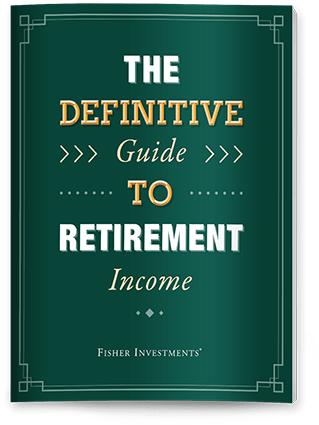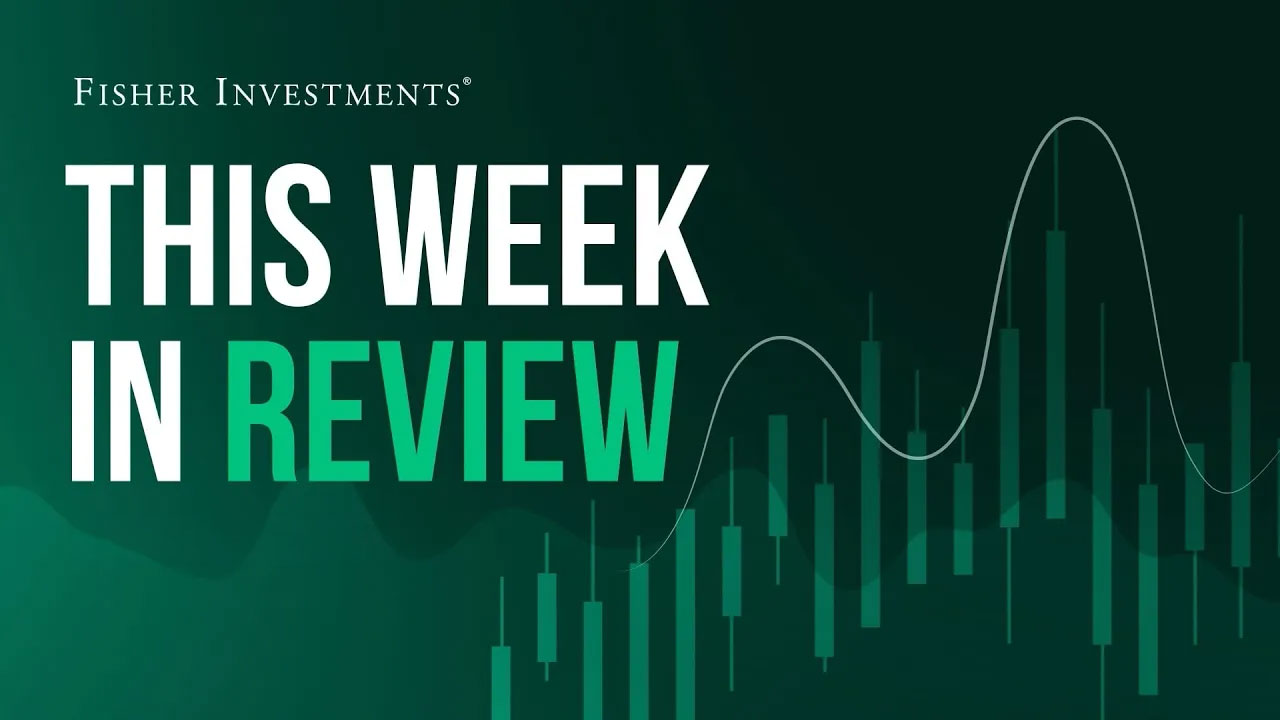Personal Wealth Management / Market Analysis
Exploring Stagflation Fears, Then and Now
Is today’s stagflation chatter reason for investors to worry?
Is dreaded stagflation lurking? Some think so after the Fed’s latest “dot plot” economic projections showed downward revisions to GDP growth and upward revisions to inflation—due in part to potential tariff fallout. Fed chair Jerome Powell noted at his post-meeting press conference that any tariff-related inflation would be “transitory,” seemingly forgetting he was in favor of retiring that particular word, but some skeptical pundits worry prices will dig in as the economy fizzles. We disagree. A comparison between the posterchild for stagflation in the 1970s—which many misremember—and the present suggests today’s fears are misplaced, in our view.
Stagflation refers to the nasty combination of a flat or shrinking economy accompanied by rising prices and unemployment. The 1970s are a frequently cited example and, arguably, the only spell in modern history that comes close. However, while that period conjures up memories of economic stagnation, rising prices—especially for gasoline—and political tumult (e.g., Watergate), the data indicate a more complex reality.
The inflation aspect was indeed bad. Despite some easing early in the 1970s’ second half, the inflation rate’s low that half-decade was still over 5% y/y, which isn’t exactly slow. (Exhibit 1)
Exhibit 1: US CPI, 1965 – 1985

Source: FactSet, as of 3/25/2025. US CPI, year-over-year change, January 1965 – December 1985.
But the “stag” part has always been a bit overstated, in our view. Yes, the US was in recession for most of 1970 and from late 1973 – early 1975.[i] During those stretches, real (i.e., inflation-adjusted) GDP contracted -0.7% and -3.1%, respectively.[ii] Yet US GDP expanded during the rest of the decade—and some years featured strong annual GDP growth. (Exhibit 2) Over the entire 1970s, inflation-adjusted GDP grew 37%.[iii]
Exhibit 2: The Not-So-Stagnant 1970s

Source: Bureau of Economic Analysis, as of 3/25/2025. Real GDP, annual change (percent), 1970 – 1979.
The unemployment rate didn’t rise perpetually throughout the 1970s, either. (Exhibit 3) While it was elevated in general, it ebbed and flowed before climbing sharply in the middle of the decade—then trended downward in the late 1970s. Moreover, unemployment peaked not in the 1970s but in the early 1980s.
Exhibit 3: Unemployment Rate, 1965 - 1985

Source: St. Louis Federal Reserve, as of 3/25/2025. Unemployment rate, monthly January 1965 – December 1985.
Many who came of age in the 1970s may recall anecdotal episodes of hardship, e.g., waiting in five-mile lines for gasoline.[iv] These memories understandably stand out. But they don’t necessarily reflect how people felt about the economy—even at the time. Fisher Investments founder and Executive Chairman Ken Fisher recalled the period in his book The Only Three Questions That Count:
Pretty much no one knew in 1974 we were already long in recession. I don’t think much of anyone saw it as a recession until 1975 and by then it was mostly over—and that was a huge one. It was heavily masked by the high level of inflation then—for many firms, revenues remained strong as unit volume shrank. Still, if few saw it, note how few would see a mild economic decline.”[v]
The 1970s weren’t an economic golden age—elevated inflation weighed on households, just as it has in recent years. But the stagnation from 50 years ago also wasn’t as entrenched as commonly believed.
Today’s stagflation concerns presume President Donald Trump’s tariffs will lead to higher prices and weaker growth. But we see some holes in this argument. First, tariffs aren’t inherently inflationary. They apply only to wholesale costs at the border, and US goods imports make up around 12% of GDP.[vi] Effective tariffs affect a small piece of total commerce—not influential enough to drive prices across all goods and services higher. This is true especially when you factor in the many workarounds and businesses’ tendency to negotiate with suppliers to split costs.
Also, inflation is a monetary phenomenon—a case of too much money chasing too few goods and services. If money supply spiked, businesses could then pass their added costs to customers broadly—which could lead to higher prices. But US money supply today is growing at its prepandemic pace, which paired with benign inflation, arguing against rapid price growth.
What about stagnation or recession? Many think Q1 GDP will dip based on recent estimates from widely watched “nowcasts.” We highlighted some issues with these projections, namely, skew tied to gold imports. The Atlanta Fed’s “Gold-Adjusted” GDPNow now shows annualized Q1 growth of 0.2%—far from gangbusters, to be sure, but not contraction.[vii] Tariffs also lack the scale to roil economic growth. It is possible America and its trading partners hit each other with higher and higher tariffs. But that doesn’t look probable to us right now, especially since the Trump administration has used tariffs more as a negotiating tactic than permanent policy. We saw this yet again Thursday, with the news that tariffs on China may drop in exchange for a TikTok deal.
Even if the dot plot projections come true, which they often don’t, true stagflation isn’t necessarily in the cards. The FOMC projects real GDP to rise 1.7% in 2025 and 1.8% annually in 2026, 2027 and over “the longer run.”[viii] Even the weakest individual forecast (0.6% GDP growth in 2026 and 2027, respectively) is still expansionary. As for inflation, the FOMC projects annual PCE inflation to decelerate over the next couple years, from 2.7% this year to 2.0% by 2027.[ix] That is a far cry from the inflation of the 1970s. It all seems pretty benign to us, illustrating the gap between sentiment and reality.
Stagflation worries are consistent with other signs of cooling sentiment toward the US. After an initial burst of excitement following last November’s election, optimism has cooled. “Business friendly” legislative changes don’t look as likely, and deregulation hopes have fallen. Those who were optimistic Trump would unleash economic growth now worry the administration’s policies may spark a 1970s rerun. While that overstates the federal government’s influence over the economy and markets, investor worries about a 1970s redux also presumes stocks were uniformly weak then.
This reputation stems from the S&P 500’s negligible price return during the decade as a whole, entrenching it in investors’ collective consciousness as a lost decade.[x] But this is a function of bear market placement. Consider: There were three S&P 500 bear markets from 1966 – 1974, contributing to some poor stretches of rolling equity returns.[xi] What gets lost: the nicely positive years, including 1971 (10.8%), 1972 (15.8%) 1975 (31.6%) and 1976 (19.2%).[xii] That so-called stagflationary period of weak economic growth, rising prices and higher unemployment didn’t mean stocks sank like a stone the whole way. There were ups and downs, just like the 2000s, and plenty of opportunities.
So no, in our view, stagflation talk isn’t reason to be bearish. It strikes us as a classic brick in a bull market’s wall of worry.
[i] Source: National Bureau of Economic Research, as of 3/25/2025.
[ii] Source: Bureau of Economic Analysis, as of 3/25/2025. Real GDP, quarterly change, Q4 1973 – Q1 1975.
[iii] Ibid. Change in real annual GDP, 1969 – 1979.
[iv] “Gas Shortages in 1970s America Sparked Mayhem and Forever Changed the Nation,” Livia Gershon, Smithsonian Magazine, 5/13/2021.
[v] The Only Three Questions That Count, Ken Fisher, pg. 53.
[vi] Source: FactSet, as of 3/25/2025. Statement based on import of goods as a percentage of real GDP, Q4 2024.
[vii] Source: Federal Reserve Bank of Atlanta, as of 3/26/2025.
[viii] “March 19, 2025: FOMC Projections Materials, Accessible Version,” Federal Reserve, 3/19/2025.
[ix] Ibid.
[x] Source: Finaeon, Inc., as of 1/8/2025. Statement based on rolling 10-year returns for S&P 500 Total Return Index, January 1960 – January 1990.
[xi] Source: FactSet, as of 3/25/2025. Statement based on S&P 500 price returns, 12/31/1965 – 12/31/1979.
[xii] Ibid. S&P 500 price returns for calendar years 1970 – 1979.
If you would like to contact the editors responsible for this article, please message MarketMinder directly.
*The content contained in this article represents only the opinions and viewpoints of the Fisher Investments editorial staff.
Get a weekly roundup of our market insights
Sign up for our weekly e-mail newsletter.

See Our Investment Guides
The world of investing can seem like a giant maze. Fisher Investments has developed several informational and educational guides tackling a variety of investing topics.





